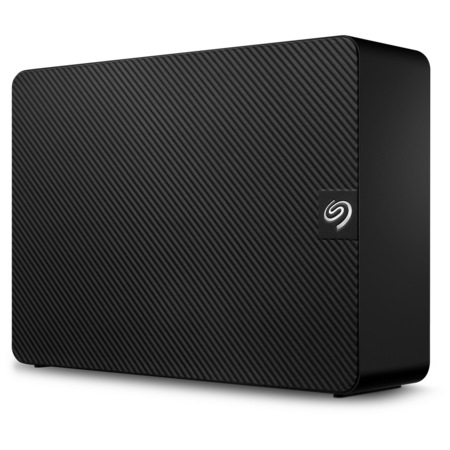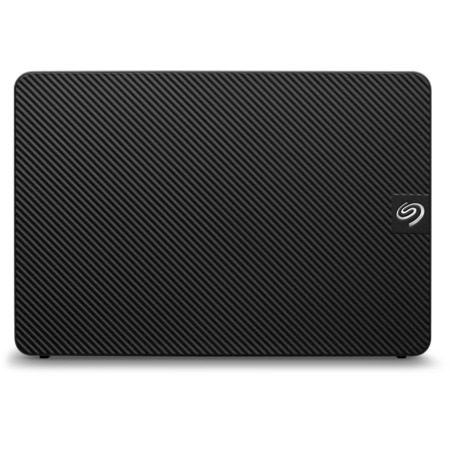Seagate has
26TB Seagate External USB 3.0 Desktop Hard Drive (STKP26000400) on sale for
$249.99.
Shipping is free.
Thanks to Community Member
SplendidSeed435 for sharing this deal.
About this product:
- Easy-to-use desktop hard drive—simply plug in the power adapter and USB cable
- USB 3.0 allows fast file transfers for efficient data management
- Drag-and-drop file saving right out of the box
- Automatic recognition of Windows and Mac computers for simple setup (Reformatting required for use with Time Machine)
- Enjoy peace of mind with the included limited warranty and Rescue Data Recovery Services




Leave a Comment
Top Comments
You might not know your drive is doing this. If you have shucked the drive, download seagate seatools and run it. While running, if your drive has idle A set to the short time you will see that the drive goes active/idle every few seconds.
To address your Seagate drive frequently transitioning from active to idle (likely due to aggressive internal power management features like head parking), you can use the SeaChest_PowerControl utility to adjust or disable the relevant settings. This is common with Seagate drives, where Extended Power Conditions (EPC) modes—such as idle_a (initial low-power idle) and idle_b (head parking)—can cause these transitions even when Windows power plans are set to keep the HDD active. The default idle_b timer is often around 2 minutes, but system activity or shorter timers can make it feel more frequent, like 10-20 seconds in some cases.
Step 1: Identify Your Drive
Open Command Prompt as Administrator.
Navigate to the folder where you extracted SeaChest utilities (e.g., cd C:\Path\To\SeaChest).
Run: SeaChest_PowerControl.exe --scan
This lists all drives with their handles (e.g., PD0, PD1). Note the PD number for your Seagate drive (look for the model and serial number).
Step 2: Check Current Power Settings
Run: SeaChest_PowerControl.exe -d PDx --showEPCSettings (replace PDx with your drive's handle, e.g., PD0).
This displays EPC settings, including timers for idle_a, idle_b, idle_c, and standby_z. Timers are in 100-millisecond units (e.g., 1200 = 120 seconds or 2 minutes). Look for enabled timers (*) under idle_a or idle_b, as these often cause frequent idling or head parking.
Step 3: Disable or Adjust the Problematic Idle Mode
The most effective fix is to disable the idle_a mode ( initial low-power idle) or set its timer higher. This persists across reboots and power cycles on most Seagate drives.
To disable idle_a entirely: SeaChest_PowerControl.exe -d PDx --idle_a disable
To set a higher timer (e.g., 10 minutes = 6000 units): SeaChest_PowerControl.exe -d PDx --idle_a 6000
Run --showEPCSettings again to confirm changes (the idle_a timer should show 0 or disabled).
Step 4: Verify the Changes
Run: SeaChest_PowerControl.exe -d PDx --checkPowerMode to see the current state (e.g., Active or Idle).
Monitor your drive for 10-20 minutes with no activity. It should stay active longer without idling. Use tools like CrystalDiskInfo to check if head load/unload cycles (SMART attribute 193) stop increasing rapidly.
Hope this helps some people.
73 Comments
Sign up for a Slickdeals account to remove this ad.
224,99 with the welcome discount...
I'm a little hesitant with Seagate in general, but a fantastic deal.
Our community has rated this post as helpful. If you agree, why not thank masterhail
Our community has rated this post as helpful. If you agree, why not thank rcheung07
Our community has rated this post as helpful. If you agree, why not thank dirtbag88
Sign up for a Slickdeals account to remove this ad.
Mine is…a bit noisy with the grinding and seeking , and it takes a noticeably long time for it to become accessible after it sleeps compared to other drives I have used.
Our community has rated this post as helpful. If you agree, why not thank fetchtables
Mine is…a bit noisy with the grinding and seeking , and it takes a noticeably long time for it to become accessible after it sleeps compared to other drives I have used.
The drives have around 3500 hours on them and they are still keeping cool and going strong in my Synology NAS.
Mine is…a bit noisy with the grinding and seeking , and it takes a noticeably long time for it to become accessible after it sleeps compared to other drives I have used.
So far I'm happy with this unit. It seems to be running well and it stays cool. So far it "just works" as intended. Of course it's only been a couple of weeks.
Sign up for a Slickdeals account to remove this ad.
Leave a Comment